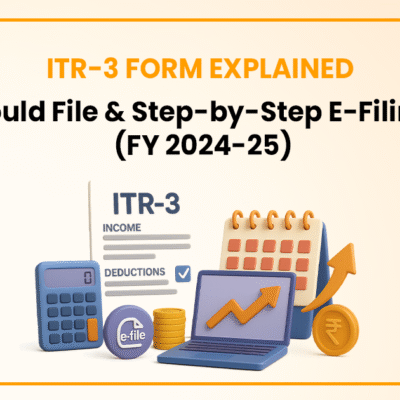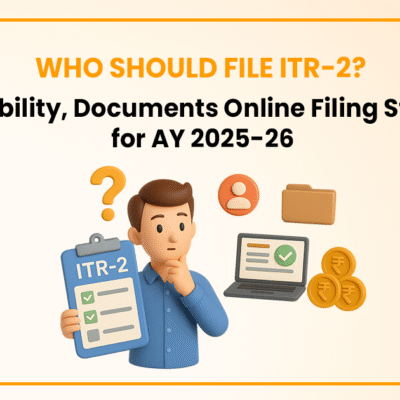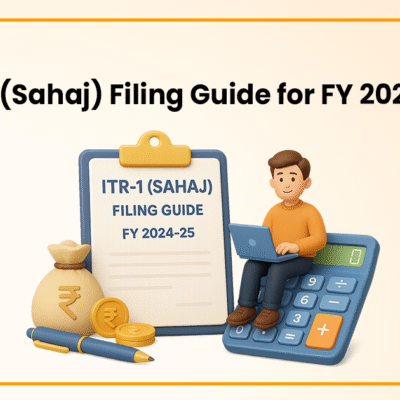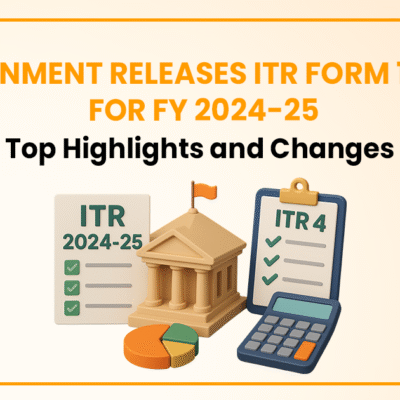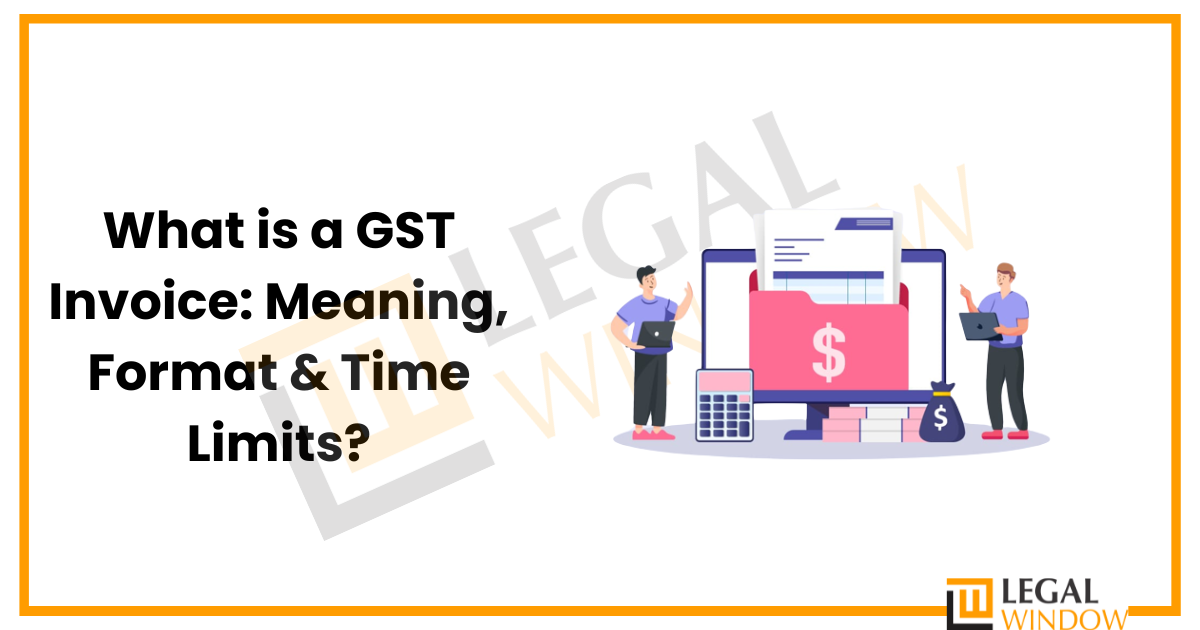
A GST invoice is an important record in the Indian taxation system that acts as actual evidence of the transaction of goods and services. It has the legal status of a legal document and is an important component of India’s Goods and Services Tax (GST) regime. This paper contains detailed information regarding the transaction, including the taxes paid. This invoice, issued by a registered supplier, facilitates the smooth transfer of input tax credit. Understanding what is GST invoice, its complexities, format, and adherence to particular time restrictions enables compliance with GST legislation, enabling smoother commercial practices and transparency in the taxing process.
Table of Content
Definition and key components of GST Invoice
A GST invoice is a document delivered by a registered supplier to a receiver that details the supply of goods or services as well as the applicable GST. This invoice is required for the GST system to facilitate the billing and payment procedure. It serves as a legal document for both parties and is used to record transactions, claim input tax credits, and determine the supplier’s tax liability.
The following are typical GST invoice components:
Name, Address, and GSTIN: The full name, address, and Goods and Services Tax Identification Number (GSTIN) of the provider must be provided.
Invoice Number and Date: Each invoice should include a unique identification number as well as the date of issue for efficient record-keeping and monitoring.
Customer Information: The recipient’s information, including their name, address, and GSTIN (if registered under GST), should be clearly stated.
Goods or Services Description: A detailed description of the goods or services being given, including the quantity, unit, and any applicable product or service codes.
Price and Discounts: The price per unit, total amount payable, any discounts, and net amount after deductions should all be mentioned clearly.
Applicable Taxes: The GST rate applicable to the individual products or services supplied, as well as the CGST (Central GST) and SGST (State GST) or IGST (Integrated GST) components, should be explicitly stated.
HSN (Harmonized System of Nomenclature) Code or SAC (Services Accounting Code): For correct GST classification, the HSN code or SAC for the goods or services being delivered is necessary.
Place of provision: The location of the provision of goods or services must be specified in order to determine the IGST or CGST/SGST applicability.
Terms of Sale: Any specific sale terms and conditions, such as payment terms, delivery terms, and other applicable conditions, should be explicitly stated.
Signature: The invoice must be signed by the supplier’s authorized signatory.
Importance of GST invoice in the Indian taxation system
The GST invoice is an important document in the Indian taxation system since it serves as a foundation for tracking the delivery of goods and services. It serves as a legal device to facilitate the smooth movement of input tax credits across enterprises. With the introduction of the Goods and Services Tax (GST) in India, the GST invoice ensures transaction transparency and accountability, allowing for efficient tax collection and compliance. Its accurate upkeep and adherence to the established structure and standards are critical in expediting the taxation process, fostering fair trade practices, and reducing tax evasion. ou may get in touch with our team on 072407-51000 or email [email protected] for GST registration and GST Compliance services.
Format of a GST Invoice
A GST (Goods and Services Tax) invoice must follow precise requirements outlined in India’s GST rules. It usually includes:
- Supplier’s name, address, and GSTIN
- Date of issue and invoice number
- The recipient’s name, address, and GSTIN or UIN (if registered)
- Description of the goods or services provided
- For commodities, use the HSN (Harmonized System of Nomenclature) code, and for services, use the SAC (Services Accounting Code)
- Quantity and measurement unit
- Total cost, taxable cost, and any applicable discounts
- GST rate and amount (integrated, federal, state, and cess) as well as site of supply
- Whether or not the tax is due in reverse charge.
- The supplier’s or their authorized representative’s signature or digital signature
Time Limits and Regulations
Certain time constraints and rules apply to GST invoices in India under the Goods and Services Tax (GST) system:
Issuance Time Limits: A provider must issue the GST invoice within a specified time limit, often within 30 days of the date of supply of goods or services.
Time Limits for Continuous delivery: In circumstances of continuous delivery, invoices must be given on a regular basis or at the completion of the supply, according to the contract terms.
Noncompliance Penalties: Failure to comply to the specified time restrictions may result in penalties and fines, perhaps leading to legal implications and disruptions in business operations.
Regulatory Compliance: Businesses must ensure GST invoice laws are followed, which includes correct recording of transactions, maintaining records, and timely submission of essential paperwork to the appropriate tax authorities.
Compliance guidelines for different business types
GST invoice compliance criteria for various business types include:
Small enterprises: If their turnover exceeds the threshold limit, small enterprises should ensure they are registered under the GST regime. To comply with GST rules, they must issue valid GST invoices and keep correct records.
Large organizations: To handle a high volume of transactions, large organizations should establish powerful invoicing systems. For seamless compliance, they must ensure accurate recording of GST details, timely issue of invoices, and adherence to the approved format.
Service Providers: Service providers must appropriately determine the place of supply for services delivered in order to apply GST effectively. They must keep detailed records of the services they perform and provide proper bills to clients in accordance with GST requirements.
Manufacturing Companies: Manufacturing companies must correctly classify their items using the relevant HSN code. To ensure effective GST invoicing and reporting, they should keep detailed records of raw inputs, final products, and related transactions.
Conclusion
A GST invoice (products and Services Tax) is a document delivered by a registered supplier to a purchaser that details the products or services provided as well as the applicable GST. It must include particular information such the supplier’s and recipient’s names, addresses, GSTINs, invoice numbers, dates, descriptions of goods/services, quantity, value, and any taxes. The format must comply with GST requirements and be delivered within a certain time frame, which is typically 30 days after the delivery date. Overall, a GST invoice is an important record for both the supplier and the consumer in terms of tax compliance and input tax credit.
Company Secretary and diligent learner deeply immersed in the world of corporate law, compliance, and governance with a focus on developing a robust foundation in legal principles and corporate practices. Passionate about exploring the intricacies of company law, regulatory compliance, and corporate governance.
Categories
- Agreement Drafting (23)
- Annual Compliance (13)
- Change in Business (37)
- Company Law (150)
- Compliance (90)
- Digital Banking (3)
- Drug License (4)
- FEMA (17)
- Finance Company (42)
- Foreign Taxation (9)
- FSSAI License/Registration (15)
- GST (123)
- Hallmark Registration (1)
- Income Tax (213)
- Latest News (34)
- Miscellaneous (170)
- NBFC Registration (8)
- NGO (18)
- SEBI Registration (6)
- Section 8 Company (10)
- Start and manage a business (27)
- Startup/ Registration (134)
- Trademark Registration/IPR (48)
Recent Posts
All Website Tags
About us
LegalWindow.in is a professional technology driven platform of multidisciplined experts like CA/CS/Lawyers spanning with an aim to provide concrete solution to individuals, start-ups and other business organisation by maximising their growth at an affordable cost.


